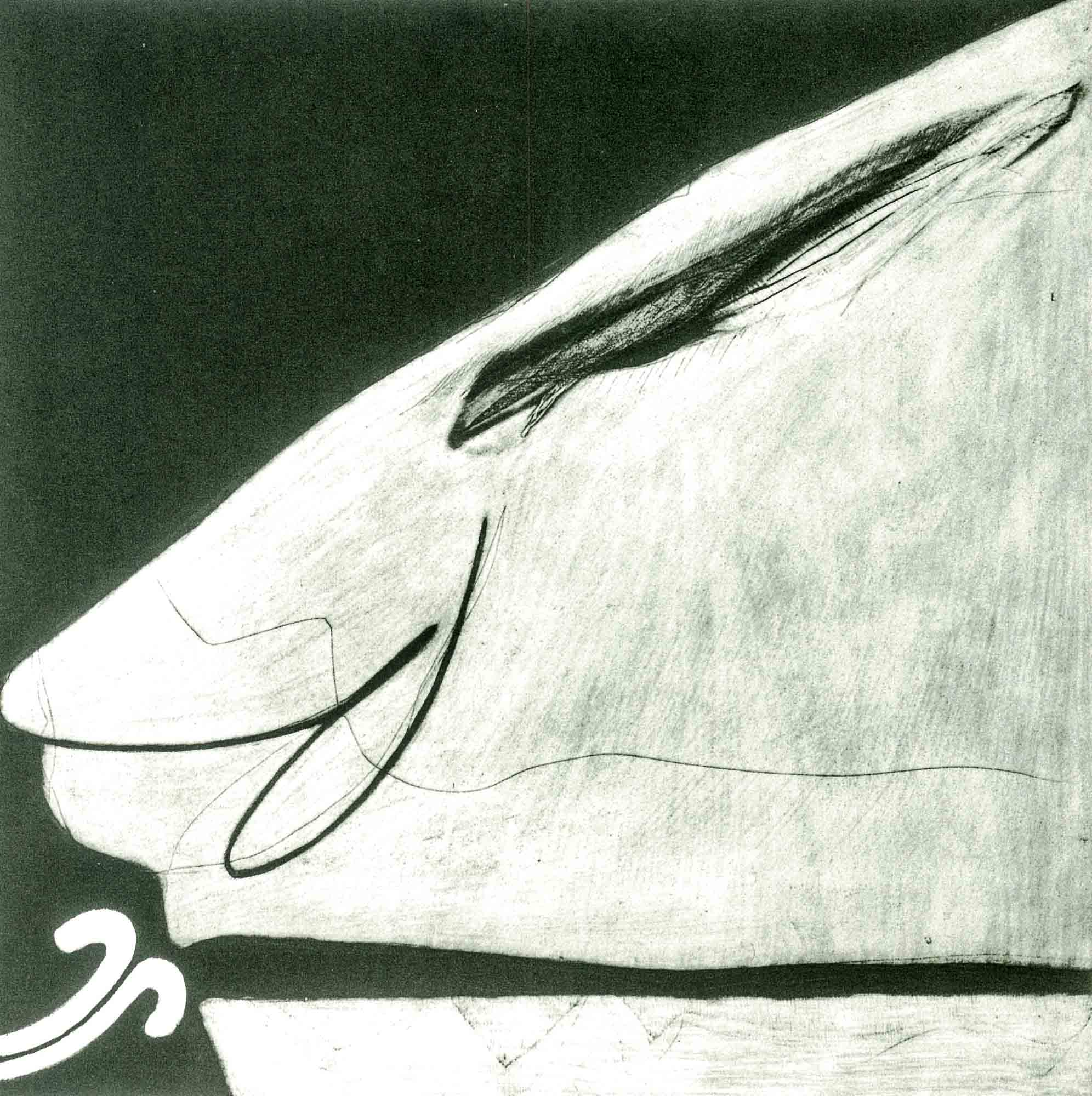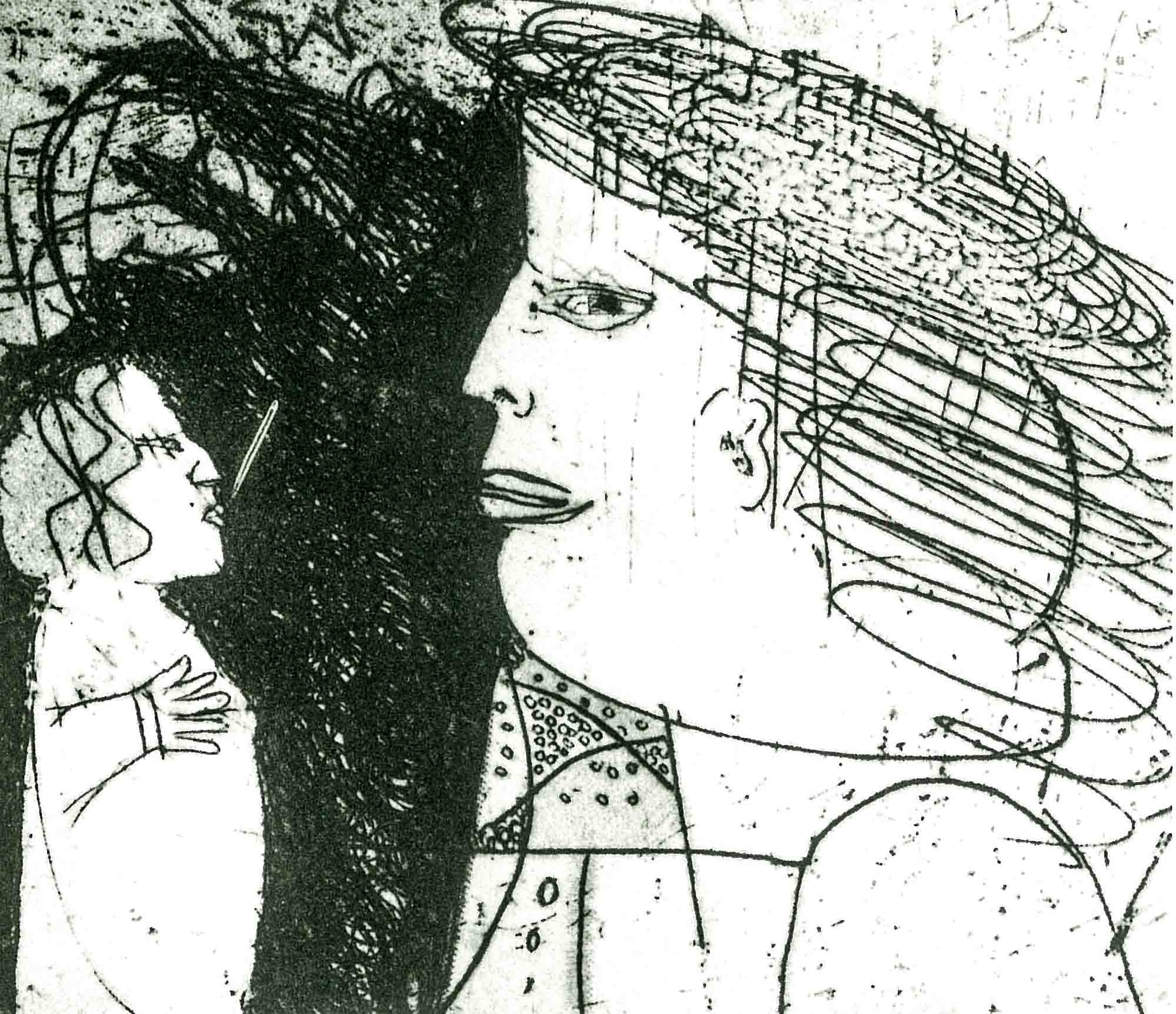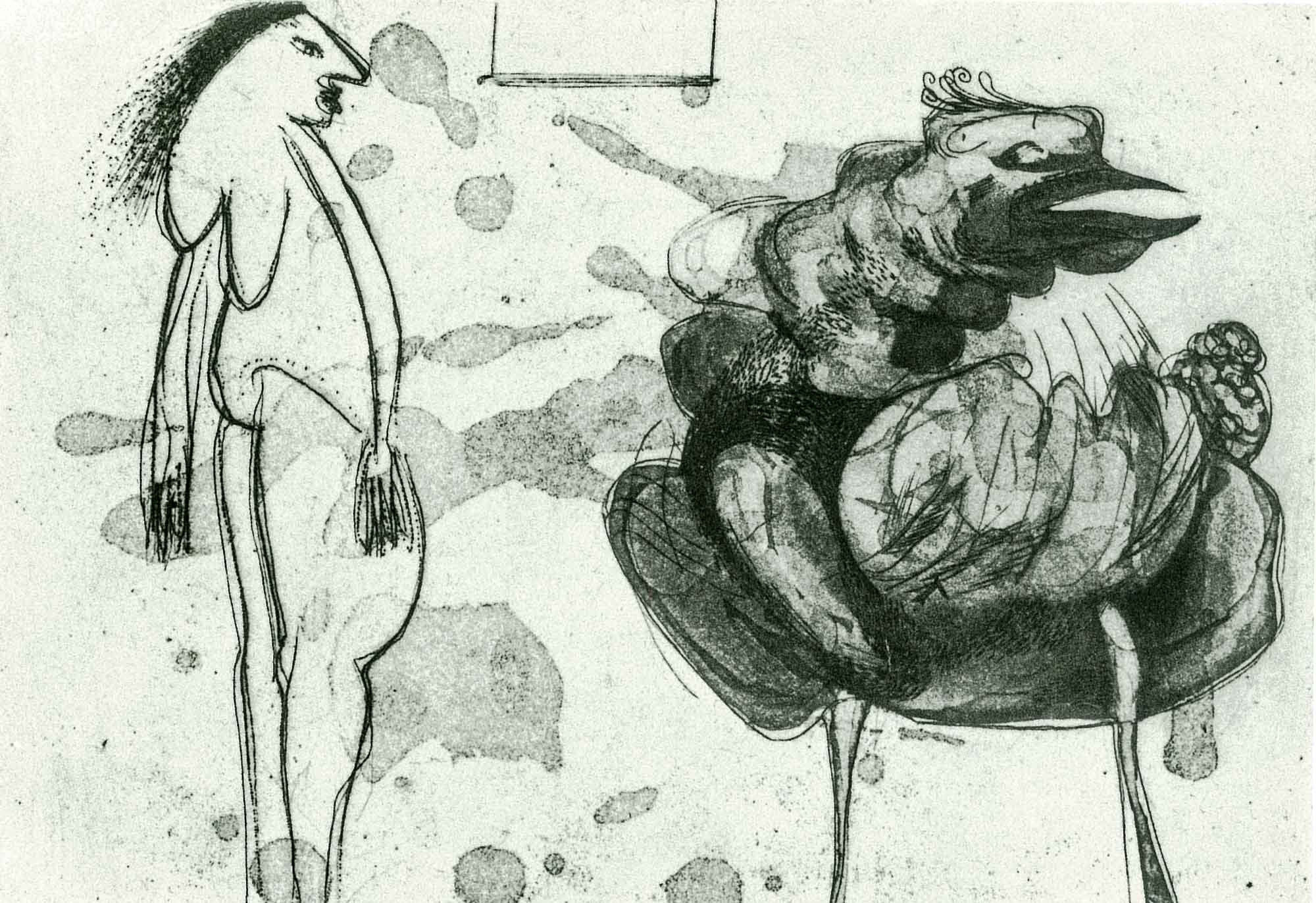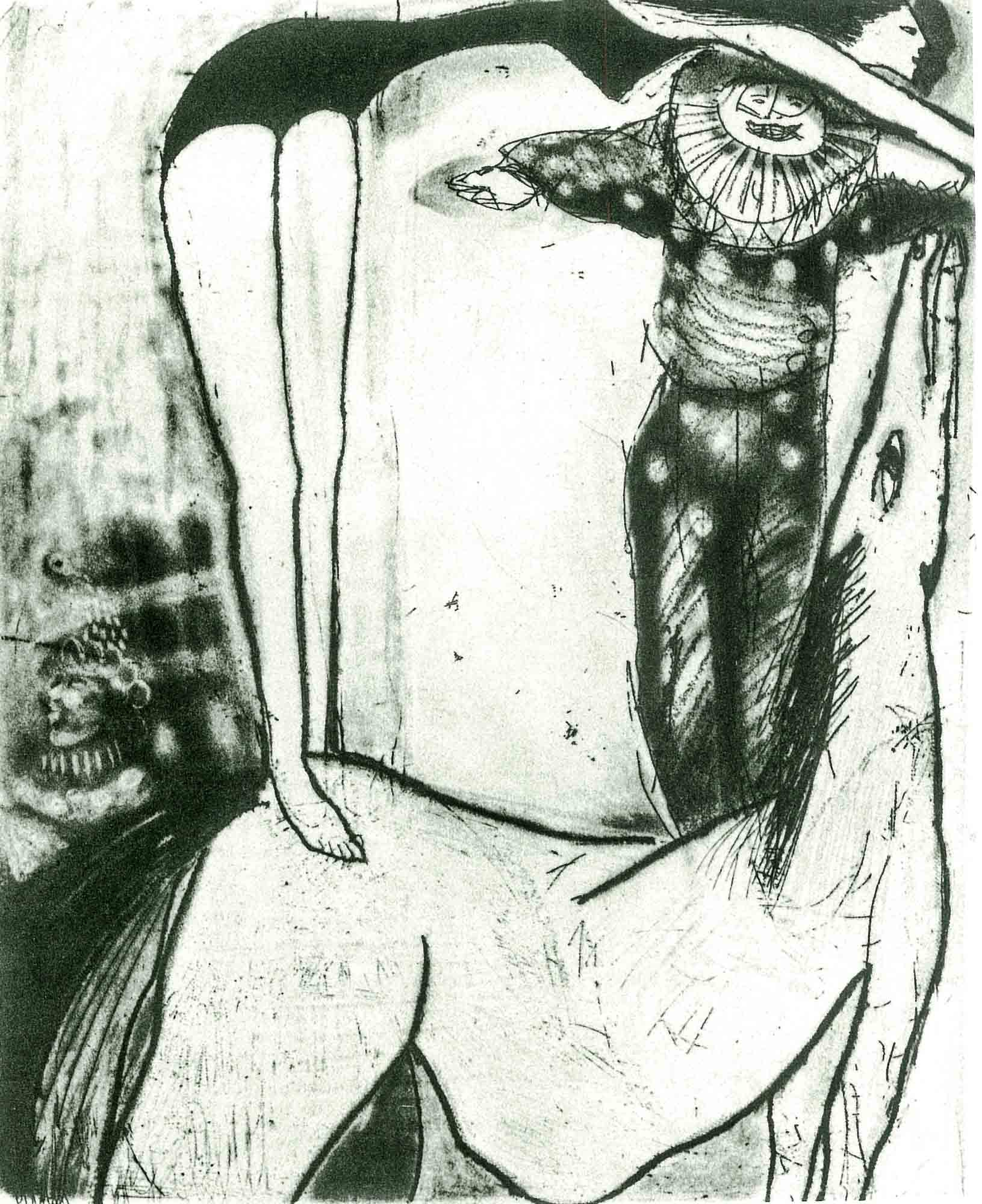Etchings
Prints | William Heydt’s interest in etching developed from a chance meeting with the V V Swiss printmaker Dadi Wirz while Heydt was a painting student at the Rhode Island School of Design and Wirz was teaching there on temporary assignment. Wirz had been a student of Stanley William Hayter, and his stories of Hayter and talk of Hayter’s technical innovations in intaglio suggested enhanced creative possibilities to Heydt, whose concern for drawing was already strong. In 1971 Heydt traveled to France to study with Wirz, who had a studio in Garrigues. There he met Hayter, whom he followed to Paris for further talk and at whose atelier he began intensive study the next year. Heydt’s commitment to etching became clear to him in the two years he spent at Hayter’s studio. His technical development paralleled the growth of his artistic personality. There was never in his association with the great innovator a hampering discipleship, no unpleasant echoes of the imagery of the master. From the first, Heydt put his talents to work in pursuit of the just expression of his fantasy and wit, which are grounded in the observation of human life and character. Figuration, of course, is at the heart of the matter, and Heydt’s ability to absorb and to translate to his own idiom stylistic features from the visual arts that have dealt with this subject matter enriched even his early efforts and took them out of a particular time and place. Heydt’s prints both synthesize and essentialize complex feelings about aspects of the human condition. They are about separateness, fugitive contacts, encounters, relationships, performances, self-image, and impact. The artist’s attitude is often satiric or ironic. But Heydt’s empathy, a strong feature of his work, is without anger or sentimentality. During his years with Hayter, Heydt managed to travel extensively in Europe and as far east as TInkey. The more strange and primitive places he visited impressed him; he responded to his sense of their oddity, and some of the visual energy of his observations in these places has come into his work. Heydt continued to paint during his time with Hayter, but also he prepared approximately thirty etching plates that met the test of his then-current self-criticism. Fifteen of these plates have since been edition ed, the ten images forming the suite” Mes Amis” (1976), and a further five individual images, induding “Lotus Love” (1976) and “Dying Species” (1977). Heydt’s edition sizes have generally ranged between thirty and fifty, numbers that he felt manageable when he himself was doing the printing. Heydt returned to the United States in 1975. He then took his Master of Fine Arts degree at the Rhode Island School of Design, his thesis having been the linocut suite “Among Friends” (1977). About this time he established a studio in Providence. There, in addition to printing the plates of the Hayter years, he began a number of new projects, mainly on the theme of the circus (which may seem to us as Heydt has pictured it a microcosm of the world). The result was “Circus Acts” (1978), a suite of ten images in an edition of sixty-five, printed by Robert E. Townsend at Impressions Workshop, Boston. Notable individual plates on the circus theme have been “Bird Act,” “Rabbit Act,” and “Square Meal”-all of 1979. Heydt continues to paint, draw, and work on etching projects. The present catalogue reflects his production to date in the etching medium that meets both his technical and aesthetic standards. This body of work is small, relative to some, but its consistency of quality and vividness of personality are exceptional. These prints reward and continue to reward the time we give to them. Often intimate in format, they are large in feeling and in the visual pleasures they afford us both through viewing and through close examination. In them we confront a subtle and refined sensibility. We discover not so much a fresh sense of others as a sense of ourselves. | Gene Baro





























